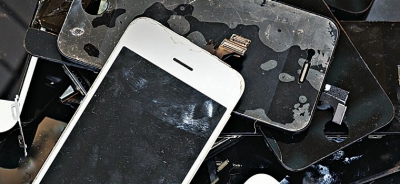Electronic Waste: Better Options than the Dumpster

By Lisa Jancarik
Discarded old cell phones, laptops and other electronics have created enough of a problem to have their own specific terms now: WEEE (waste electrical and electronic equipment) or “e-waste”. According to a report released by Countering WEEE Illegal Trade (CWIT), only about 35 percent of the European Union’s used, but functional, electronics discarded in 2012 made it to official collection and recycling systems. The rest were either exported, recycled under noncompliant conditions (often linked to other organized crimes) or just tossed in dumpsters.
The U.S. is in no position to gloat over its track record with e-waste, either. Nonprofit firm Silicon Valley Toxics Coalition reports that 70 percent of the heavy metals in American landfills come from e-waste of value, releasing lead and other contaminants into the environment in the process. “If they can pull the metals out by bashing and burning, that’s what they do,” said Barbara Kyle, executive director of Electronic TakeBack Coalition. “These are people working for a few dollars a day and don’t get health safety.”
Urban Mining
Electronics too obsolete to be repurposed may still have their components recycled. Recyclers will very often charge a nominal fee to accept e-waste, but some do it for free. These organizations may harvest parts like circuit boards for reuse or resale. John Sherigan, chairman and CEO of Electronic Recyclers International, describes the process of reclaiming batteries and power supplies from the e-waste in landfills as “urban mining.” However, he offers a much broader definition of the term: “Urban mining goes way beyond electronics,” he said. “It’s everything that goes into a landfill that can be taken out.”
The U.S. Environmental Protection Agency reports that Americans simply trash two million tons of e-waste annually, six times the amount they recycle. Upgrading your phone? The agency estimates that only 11 percent of discarded smartphones make it to recycling facilities annually.
Shipping E-Waste Overseas
Shipping e-waste overseas is mostly legal in the United States, so much of the first world’s electronic waste is simply sent elsewhere. The nations on the receiving end – most often China, Vietnam, Ghana and Nigeria – have few, if any, regulations of their own. According to the Electronics TakeBack Coalition, which promotes responsible electronics recycling, crude and unsafe methods are used to extract any materials. For companies like ERI, discarded electronics offer a rich source of metals like platinum and iridium. China accounts for 97 percent of the rare earth metals market, but U.S. landfills offer a potential domestic source for these same elements.
ERI’s success depends in part on regulations at the state level. For example, California charges a fee for new electronic devices to support e-recycling efforts. The fees subsidize recyclers and collectors who bring electronics to recycling plants. Other states shift the burden of recycling efforts to manufacturers, encouraging design of easily recycled products or use of recycled materials.
Donations
Donated mobile services occupy a special niche for repurposing. Working cell phones collected by domestic violence programs and shelters offer people who need those services a lifeline. For example, Verizon’s HopeLine is a free service accepting donations of working mobile devices to distribute to people who need them.
In the U.S., consumers can often donate their outdated, but functional, equipment to organizations like Goodwill or the Salvation Army. Some charities like iLoveSchools.com and the National Cristina Foundation find homes for this sort of equipment in schools and nonprofit organizations, like food banks.
Future: Doing Something Smarter With Smartphones
According to Darren Beck, blogger and member of Sprint’s Corporate Social Responsibility Practice, reuse is the key to managing unwanted phones in the future. Even older models can process data and communicate via Wi-Fi or Bluetooth. These devices contain accelerometers, GPS systems, touch screens,
gyroscopes and cameras; all components potentially reusable elsewhere. Beck describes Sprint’s Smartphone Encore Challenge as a contest for U.S. college students to develop an innovative device using older smartphones or their components.
Classroom Discussion
- Have you ever disposed of an electronic device? What did you do and why did you make that choice?
- Would you do it again or would you do it differently now?

